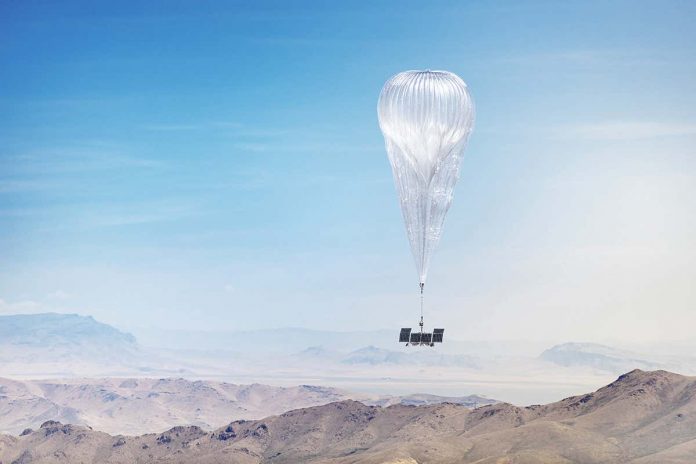[ad_1]

Loon
Huge stratospheric balloons that act as floating cell towers in remote areas can stay in the air for hundreds of days thanks to an artificially intelligent pilot created by Google and Loon.
Loon, a subsidiary of Google’s parent company Alphabet, produces tennis-court-sized balloons that are filled with helium and sent into the stratosphere. They can transit internet signals from ground stations to smartphones and other personal devices – just like cell towers, but nearly 20 kilometres up in the air.
Keeping these huge balloons in a fixed position is difficult as they can get blown off course. Now, researchers at Loon and Google have joined forces to create an AI controller that can counter the harsh winds of the stratosphere by releasing air to descend or adding it to ascend, riding atmospheric currents in the desired direction.
Advertisement
The two firms used an AI technique called deep reinforcement learning to train the balloon’s controllers. “Reinforcement learning is the science of getting computers to learn from trial and error,” says Marc Bellemare at Google’s AI division in Montréal, Canada. The controller consults historical wind records, weather forecasting and current local wind patterns to simulate many different scenarios and determine the best route to take.
“The new controller does a more efficient job of navigating the balloon, allowing us to save power,” says Sal Candido, chief technology officer at Loon. If the balloon has limited power left and it predicts harsh weather conditions, the controller conserves charge and helium – similar to how we pay closer attention to the petrol gauge during icy weather, says Bellemare.
A Loon balloon must be within 50 kilometres of its ground station to reliably send and receive signals. Bellemare and his team found that these new AI controllers successfully kept the balloons within the ground station range more frequently than the previous controllers. In cases where the balloons were knocked off course, they also returned to the correct position faster.
Loon announced a new record-setting balloon earlier this year that lasted in the stratosphere for 312 days. The firm confirmed this balloon was using the new AI controller, smashing the previous record of 223 days set by the old controllers.
Loon balloons are already providing internet to tens of thousands of people in remote parts of Kenya, Mozambique and Peru. “In 2017, Loon served emergency connectivity in Puerto Rico following Hurricane Maria,” says Bellemare.
Edward Johns at Imperial College London says AI control systems should be more widely used. “Powerful deep reinforcement learning comes up with solutions which are better than those from even the brightest human engineers,” he says.
Journal reference: Nature, DOI: 10.1038/s41586-020-2939-8
More on these topics:
[ad_2]
Source link











